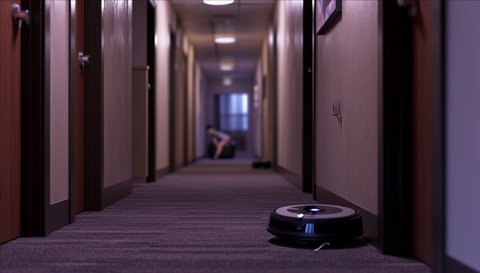In the dynamic world of multi-family real estate, maintenance costs are a significant concern, especially in the face of rising labor expenses. As property managers grapple with budget constraints and efficiency demands, the advent of commercial robot vacuums offers a promising solution. This article explores the compelling financial case for integrating commercial robot vacuums into multi-family property maintenance, particularly through innovative leasing models.
The challenge in the real estate sector is twofold: managing escalating labor costs while maintaining high standards of property upkeep. Traditional cleaning and maintenance methods, predominantly reliant on manual labor, are becoming increasingly costly. This rise in expense is due to various factors, including labor market fluctuations, minimum wage increases, and the growing complexity of property management. In this landscape, the efficiency and cost-effectiveness of commercial robot vacuums emerge as a game-changer.
Commercial robot vacuums represent a leap forward in property maintenance technology. These automated devices promise not just to maintain but to elevate the standard of cleanliness in multi-family buildings, all while offering a more predictable and often lower cost structure than traditional labor. The leasing models available for these robotic solutions are particularly attractive, providing property managers with fixed costs, cutting-edge technology without the hefty upfront investment, and flexibility in scaling their operations.
In the following sections, we'll dive deeper into the cost comparisons between leasing robot vacuums and traditional labor, the additional benefits they bring beyond mere cost savings, and real-life success stories from the multi-family real estate sector. This exploration aims to shed light on why the shift to robotic cleaning technology isn't just a futuristic fantasy but a necessary step in the present-day financial strategy of property management.
Overview of Commercial Robot Vacuums and Leasing Models
In the context of multi-family real estate, commercial robot vacuums represent more than just an automated cleaning solution; they embody a strategic approach to managing maintenance costs. These robotic systems, available through flexible leasing models, offer a financially savvy alternative to the traditional labor-intensive maintenance methods.
The Advantages of Leasing
Leasing commercial robot vacuums presents several financial advantages for property managers. The most apparent benefit is the elimination of a significant upfront investment. By leasing, properties can equip themselves with the latest cleaning technology without bearing the full purchase cost. This approach converts a potentially large capital expenditure into a manageable, fixed operational expense.
Fixed Labor Costs in a Volatile Market
In an environment of fluctuating labor costs, the fixed monthly or annual lease payments for robot vacuums provide a layer of financial predictability and stability. This fixed cost model contrasts sharply with the unpredictable expenses associated with manual labor, which can fluctuate due to wage increases, staffing challenges, and overtime costs.
Flexibility and Scalability
Leasing also offers the flexibility to scale up or down based on the property's needs. As the demands of the property change, managers can adjust their lease agreements to include more or fewer units, ensuring that cleaning efficiency is always aligned with the property's requirements.
Access to the Latest Technology
Lease agreements often include maintenance services and upgrades to newer models, ensuring that properties are always equipped with the latest technology. This not only means consistently high cleaning standards but also access to advancements in robotic vacuum technology without additional investment.
Reducing Dependency on Manual Labor
With the implementation of robot vacuums, properties can reduce their dependency on manual labor, which is becoming increasingly scarce and expensive. This shift not only curtails labor costs but also mitigates risks associated with staffing shortages and turnover.
The leasing model of commercial robot vacuums offers a compelling solution for multi-family real estate properties, aligning cost-effectiveness with operational efficiency. In the subsequent sections, we will explore a detailed cost comparison with traditional labor, examine the broader benefits, and look at real-world applications in the industry.



